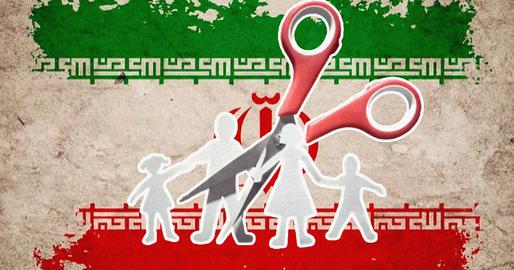Throughout the coronavirus outbreak, IranWire's Shahed Alavi has documented the trajectory of the coronavirus crisis and how the government has handled it.
This is an update for IranWire's coronavirus chronology, covering the end of June.
Read the full chronology to date.
As the month of June came to a close, the coronavirus crisis remained critical or serious in 15 provinces across Iran, and calls for restrictions to be reimposed intensified. On June 24, Deputy Health Minister Alireza Raeesi called for the wearing of masks to become mandatory at gatherings, indoor public places and on public transport. Friday prayers in Tehran were canceled on June 26.
Iran’s death toll from COVID-19 rose to 9,996, with 133 new fatalities in the 24-hour period covering June 23 and June 24, according to the health ministry’s spokeswoman Sima Sadat Lari. This, Sadat Lari said, represented a reversal of the steady fall in daily numbers as the country relaxed its lockdown. For the first time in two months, the daily death toll has regularly topped 100, mirroring a sharp rise in new cases since restrictions on movement began to be lifted in mid-April. She said that the total of confirmed coronavirus cases had reached 212,501, with 2,531 new cases being reported in one day.
However, Fatemeh Zarin-Amizi, spokeswoman for the National Testing Organization, said nationwide university entrance exams will be held on schedule, declaring that there was no need to change the dates even in cities on high alert. She said entrance exams would be carried out following the appropriate sanitary protocols and maintaining social distancing.
According to a decision by the Coronavirus Taskforce and an order by the ministry of health, indoor swimming pools were allowed to reopen in areas with “yellow” or more moderate alert levels, provided 50 percent fewer people used the facilities and five square meters was allocated to each swimmer, announced Reza Gol-Mohammadi, the director general of the Tehran Sports Bureau.
Contradictions and Disagreements
Official numbers and data on the rate of infection and deaths appeared to contradict one another. Deputy Minister of Health Alireza Raeesi announced that in some provinces, including Qom and Gilan, "about 40 percent" of people had contracted coronavirus, with Tehran reporting that nearly 15 percent of its residents were infected. If this is true, and if 15 percent of people in Tehran have coronavirus, that alone would mean that Iran has more than a million cases. Health ministry officials did not explain the inconsistencies between the official numbers and their warnings regarding high percentage rates.
Disagreements between provincial officials, members of parliament and the government in Tehran have been frequent throughout Iran’s coronavirus crisis. On June 23, Hossein Ali Shahriari, a representative from Sistan and Baluchistan and the chairman of the parliament’s health committee, accused the government of not fully cooperating with the health ministry and claimed the president was playing the role of a health expert in decision-making. He acknowledged that many health protocols were in need of revision, and he warned that if the situation continued, many more Iranians would perish from coronavirus, not only in his home province but across the country. He asked the government to provide people with cheap or free masks, especially to ease the financial burden on large families.
Rouhani Pledges Economic Recovery
“Health and livelihood are the main concerns of the Iranian people today,” President Rouhani announced on June 24, adding: “the pandemic has affected politics, economy and even the lifestyle of the people all over the world.” He reiterated that Iran’s response to the crisis was key, and that he aimed to tackle unemployment and work toward restoring the economy once the crisis was over.
“Iran is the only country that has to deal with both sanctions and financial troubles” during the pandemic, said the health minister Saeed Namaki. While the US has spent $111 billion and the UK £22 billion on healthcare and on fighting coronavirus, he said, Iran had allocated around one billion euros “with the approval of the Supreme Leader.” However, he also added that three and a half months on from this allocation, the government had spent less than 30 percent of this amount; it was not clear whether this comparison was presented to show Iran’s strength or its weakness.
Bleak News from the Provinces
While President Rouhani and his administration continued to insist on the need for businesses to reopen, the health minister stated that the efforts of “some officials,” alongside the public’s carelessness, were leading to a rise in coronavirus cases in several provinces. He stopped short of naming anyone in particular. “What you see in some provinces today is not the second coronavirus peak but the first peak moving into various provinces,” Namaki said.
Health ministry spokeswoman Sima Sadat Lari reported that hospitalizations in the provinces of Khuzestan, Hormozgan and West Azerbaijan were higher than other provinces, although the rate of fatalities in Khuzestan had declined. On the other hand, the rate of infections in the cities of Abadan, Bandar Abbas and Iranshahr and in the provinces of Fars, Golestan and Zanjan, continues to climb.
The health ministry agreed to requests that restrictions be reimposed in the 15 provinces that are on high or "red” alert, and where the number of infections and hospitalizations continue to increase. Reiterating Namaki's statement, Sadat Lari reported that the epidemic is in its first peak in the provinces of Khuzestan, Hormozgan, Bushehr, Kurdistan, Kermanshah and West Azerbaijan, that Fars and Kerman are in a dangerous situation and that infections and hospitalizations are on the rise in Lorestan, Chaharmahal and Bakhtiari, Razavi Khorasan, Golestan, East Azerbaijan, Hamedan and Zanjan.
The coronavirus epidemic has reached a peak in seven provinces and it is expected that two other provinces will follow, said government spokesman Ali Rabiei on June 23.
Pointing out that coronavirus infections in Tehran might increase, Dr. Alireza Zali, the director of the Tehran Coronavirus Taskforce, said that about 40 percent, or close to 4,000, beds at convalescence centers in Tehran are still available, and that the number of beds could quickly be increased.
The number of coronavirus infections in Kermanshah province has been picking up speed, said Mehdi Mohammadi, a member of the coronavirus taskforce at Kermanshah University of Medical Sciences. According to him, when the coronavirus epidemic started in Iran in February, the daily average of infections in the province was only four, but then it increased to 22 and then to 76. By the end of June, the figure had risen to 226 per day. Consequently, the number of coronavirus fatalities had increased as well.
Medical personnel in hospitals in Bushehr province contracted the virus in late June, with Saeed Kashmiri, the president of Bushehr University of Medical Sciences reporting that 412 had been infected. The situation in Bushehr province no longer poses a cause to be alert, it has turned into a crisis, Kashmiri announced, adding that the number of patients in intensive care units had increased and predicting further fatalities in the coming weeks. He said that at the end of May, the transmission of the virus followed a clustered pattern, but now it has changed and transmission is occurring across the population and the imposition of certain restrictions were inevitable.
Coronavirus cases are not under control in Asaluyeh and Kangan in Bushehr province. The two cities are located at the center of the Pars Special Energy and Economic Zone, a large development project for heavy industry and refineries, and the many people employed to work on the project can easily transmit the virus to their families when on leave. In addition to this, project managers are ignoring health protocols and the distribution of sanitary packs among the workers has been stopped.
Musa Ahmadi, a member of the parliament from Kangan, announced that the situation in the two cities is beyond red alert and people are dying every day. Nonessential projects must be shut down, he said, because everyone working in the zone is in danger.
The number of coronavirus patients in Golestan province, and especially in its eastern regions, has increased, announced Abdolreza Fazel, president of Golestan University of Medical Sciences. He predicted that this trend will continue for another 10 days in cities that are on red alert.
Mehdi Shafiei, the president of Kerman University of Medical Sciences, warned that the situation in Kerman province was very dangerous but it could get even worse and witness a second wave of the pandemic.
Unlike Tehran, which was reported to have enough beds for incoming patients, almost all hospital beds in the southern part of Kerman province were taken and fatalities were on the rise, according to Asghar Makarem, president of Jiroft University of Medical Sciences. He warned that if the infections increase rapidly, hospitals would be unable to cope.
According to Mehrzad Lotfi, the president of Shiraz University of Medical Sciences, in the 24-hour period covering June 23 and June 24, Fars province experienced record-breaking coronavirus fatalities. He urged the governor of the province to impose social restrictions and to instruct people to wear masks in public spaces and on public transport before a second wave of the epidemic hits Fars.
Coronavirus is surging rapidly in Khuzestan province, said Reza Nejati, a member of the Khuzestan Coronavirus Taskforce. He added that as the government acknowledged that the situation was critical in the province, it should also provide Khuzestan with proportionate help and facilities.
With the jump in infections and hospitalizations, Fereydoon Rahmani, the vice president of the Chaharmahal and Bakhtiari University of Medical Sciences, said 80 percent of coronavirus wards in Chaharmahal and Bakhtiari province were full and if the number of patients accelerated in the coming days, it would put the province in a crisis situation. He reported that in the third week in June, the number of coronavirus infections had gone up from 12 percent to 27 percent.
Iranian Hackers
Reuters reported that pro-regime Iranian hackers had been behind attempts to break into the personal email accounts of staff at the World Health Organization in early spring. Speaking to technology experts who monitor criminal cyber activity, the report said it was not clear if any accounts had been compromised, but that it was obvious that WHO and other organizations providing information and guidance about the pandemic had been under regular online attacks.
One source with close links to US intelligence said he was aware of the Iranian campaign, and that such attacks were expected during times of international crisis. He said hackers would be looking to uncover various countries’ coronavirus response plans or treatment plans so that intelligence agencies of Iran or other countries could benefit from this information. Data from WHO or other organizations would also be valuable to these hackers, the source told Reuters.




























comments